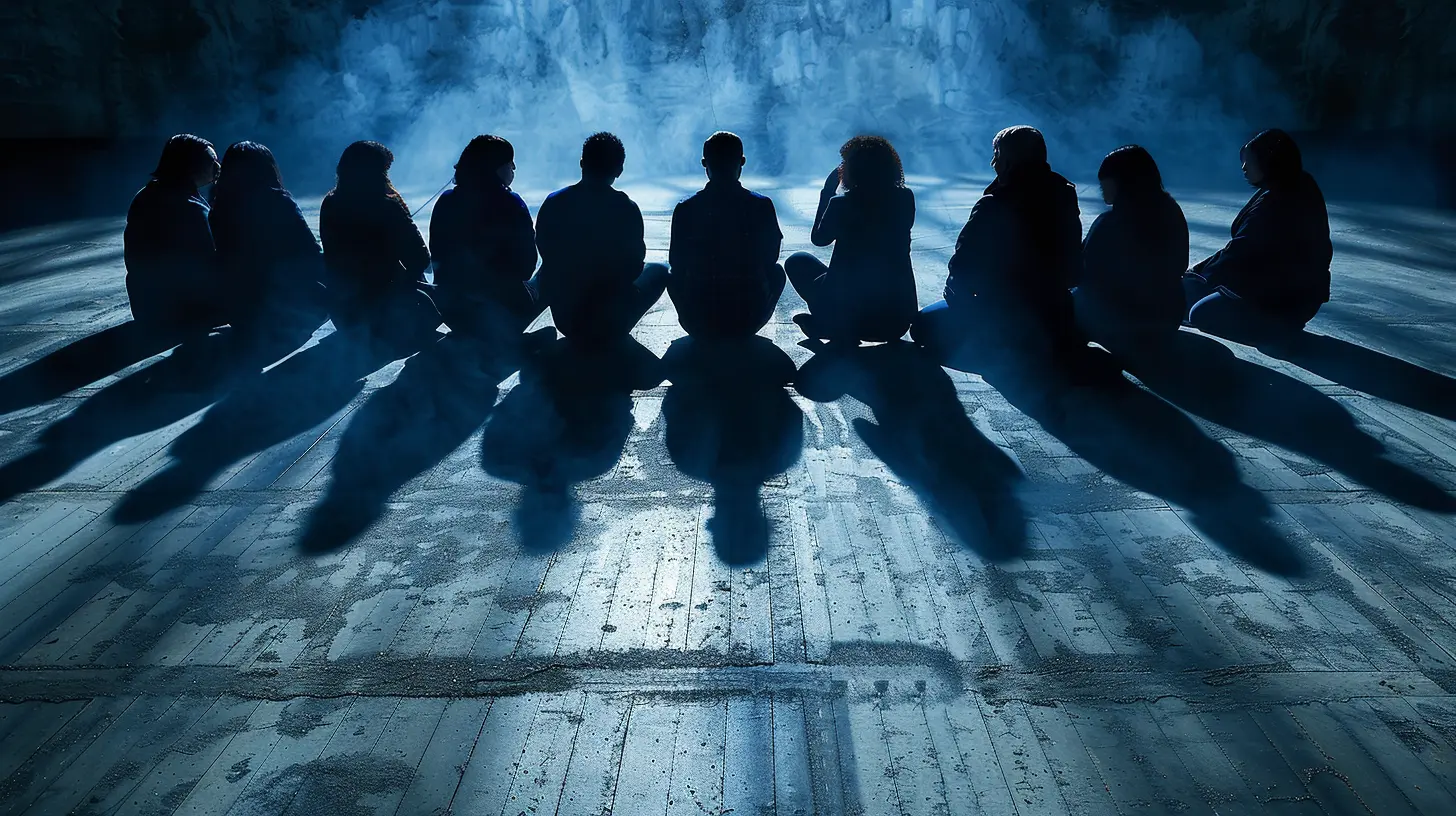Navigating Conflict in Group Therapy Sessions
1 July 2025
Group therapy can be a powerful tool for healing—but it’s not a walk in the park. Imagine sitting in a room full of strangers, all carrying emotional baggage, and expected to open up. Now add the complexity of clashing personalities, differing beliefs, and raw emotions. What could go wrong, right?
Well, plenty… but that’s not necessarily a bad thing.
Conflict isn’t just inevitable in group therapy—it’s essential. It stirs the surface, brings hidden issues to light, and, when handled right, brings people closer to real healing. But how do we manage it without letting things spiral out of control?
This post delves deep into the emotional jungle of group therapy. It will help you understand what kinds of conflicts arise, why they matter, and how to navigate them like a pro—even when it feels like emotional Jenga.
Why Conflict in Group Therapy Isn’t a Bad Thing
Let’s kick this off with a truth bomb: Conflict is not your enemy.Yup, you heard that right.
Think of conflict in group therapy like a storm. It’s messy and unsettling, but it also clears the air. It opens doors to conversations we wouldn’t otherwise have. Without conflict, therapy risks becoming a polite, surface-level chat that tiptoes around deep-seated issues.
The beauty of group therapy is watching people connect, challenge, and mirror each other. And friction? That’s the fire that forges stronger emotional connections. When handled with care, those heated moments become lightbulb moments.
So, why does conflict pop up in the first place?
Let’s break it down…- Different backgrounds, different worlds: People bring their experiences, traumas, biases, and communication styles to the table.
- Trigger city: Sometimes, another member's story or tone hits a nerve.
- Projection at play: It’s common to project unresolved feelings onto others in the group.
- Power dynamics: Some may dominate the conversation, while others withdraw, creating imbalance.
- Fear and vulnerability: Opening up is terrifying. Conflict can be a defense mechanism kicking in.
Common Conflicts You Might See in Group Sessions
Let’s peek behind the curtain and look at the usual suspects when it comes to group therapy drama.1. The Talker vs. The Listener
You’ve got someone who won’t stop talking, and another who hasn’t spoken in three sessions. Frustration builds. People might feel ignored or steamrolled. Others might be silently boiling with resentment, unsure how to speak up.2. Personality Clashes
Put a blunt realist in a room with a sensitive empath, and you’ve got a recipe for sparks. Some people are straightforward, others more emotional. When these styles clash, it can feel personal, even if it’s not meant to be.3. Invalidating Comments
Statements like “That’s not a big deal” or “You’re overreacting” can feel like a slap in the face. One person’s coping mechanism might invalidate someone else’s trauma. These moments sting—hard.4. Competing Traumas
Ever heard someone try to "one-up" another person’s pain? It’s not always intentional, but sometimes sharing turns into an unspoken competition on who’s had it worse. This can derail the session and leave members feeling unseen.5. Therapist-Facilitated Missteps
Yep, even the therapist can misstep. Maybe they miss a cue, overlook a brewing tension, or accidentally favor one member. This can breed distrust within the group.
The Psychology Behind Conflict in Group Therapy
Let’s take a quick detour into the human brain. When we feel emotionally unsafe, our fight-or-flight response kicks in. In the context of group therapy, that might look like sarcasm, withdrawal, defensiveness, or even anger.But guess what? These reactions are gold for a therapist. They reveal patterns, triggers, and emotional wounds that need attention. Conflict is like a flashlight in the dark corners of the psyche.
Also, we often recreate dynamics from our past in therapy—a phenomenon called repetition compulsion. So, if someone felt unheard in childhood, they might clash with a dominating group member. The conflict gives them a shot at rewriting that narrative.
How to Navigate Conflict Like a Pro
Alright, enough theory. Let’s get down to the nitty-gritty of dealing with conflict when you’re in the thick of it.1. Pause Before Reacting
Feel the heat rising? Heart racing? That’s your cue to pause. Take a breath. Count to five. Buying yourself a few seconds can prevent a lot of emotional regret.2. Name the Emotion
Instead of lashing out, name what’s going on inside. Say something like, _“I feel frustrated because I don’t feel heard.”_ Naming emotions reduces their power and builds bridges rather than blowing them up.3. Use “I” Statements—Seriously, They're Magic
Saying _“You’re so controlling”_ will spark a war. Try _“I feel overwhelmed when the conversation moves so fast”_ instead. It keeps the conversation open and respectful.4. Lean Into Curiosity
Ask yourself: _“What is this reaction trying to tell me?”_ or _“Why does this person trigger me so much?”_ Shifting focus from blame to curiosity is a game-changer.5. Let the Therapist Do Their Thing
The therapist isn’t just there to nod and take notes. They’re trained to handle conflict. So if tension rises, trust the process. Don't hesitate to bring it up—chances are, they’ve already sensed it.The Therapist’s Role in Managing Conflict
A skilled group therapist is like a conductor in an emotional orchestra. They have to make sure no one is hogging the solo while others fade into the background.Here’s how therapists typically manage conflict:
- Reading the room: Good therapists sense undercurrents before they become tidal waves.
- Encouraging emotional honesty: They create a safe space to share uncomfortable truths.
- Modeling calm responses: They show how to handle tension with grace and empathy.
- Resolving, not suppressing conflict: Avoiding tension only buries it deeper. A good therapist helps the group address it head-on.
- Balancing the voices: Ensuring every member has space to speak.
When Conflict Turns Toxic
Not all conflict is constructive. Sometimes, it crosses a line. Here’s how to tell the difference:Red Flags:
- Personal attacks- Stonewalling (silent treatment)
- Constant interrupting or dominating
- Threatening behavior
- Retaliation or revenge dynamics
If any of these show up repeatedly and aren’t addressed, it’s time to talk to the therapist—or even reconsider if the group is the right fit.
Tips for Staying Grounded During Conflict
Let’s be real—conflict feels gross. But staying grounded can help you weather the emotional storm.Try this:
- Breathe deeply: It sounds cliché, but it works.
- Plant your feet: Literally. Feel the floor beneath you. It keeps you present.
- Keep a journal: Write out how you felt after the session. Reflect. Track patterns.
- Have a trusted buddy (outside group): Venting is healthy—but not in the group. Keep it outside and confidential.
- Self-care post-session: Do something soothing afterward—music, a walk, even Netflix.
Long-Term Benefits of Working Through Conflict
Here's the kicker: The very conflicts that make group therapy hard are the same ones that make it transformative.When you face emotional tension and come out the other side, you begin to:
- Build resilience
- Strengthen your communication skills
- Feel more confident asserting boundaries
- Develop empathy for others’ perspectives
- Heal old wounds through new relationships
Group therapy becomes a microcosm of the outside world. If you can navigate conflict in that room, you’re better equipped to handle it everywhere else.
Parting Thoughts: Turning Conflict Into Connection
Here’s the truth about healing—it’s messy.Group therapy isn’t about holding hands in a circle and trading life hacks. It’s raw. It’s real. Sometimes it hurts. But in that discomfort lies the potential for profound transformation.
Conflict shows us where we still hurt. It reveals the parts of us that crave attention, understanding, or validation. And in a group that’s committed to healing, those painful moments often lead to the most powerful breakthroughs.
So next time tension flares in your group session, don’t run. Stay curious. Speak honestly. Trust the process. Because beneath that friction? That’s where the magic happens.
all images in this post were generated using AI tools
Category:
Group TherapyAuthor:

Jenna Richardson
Discussion
rate this article
2 comments
Veda Ruiz
Navigating conflict in group therapy can be challenging, but it also presents an incredible opportunity for growth and connection. Embrace the discomfort—each disagreement is a chance to deepen understanding and foster empathy. Remember, unity often emerges from discord; together, you can transform tension into healing and strength.
November 27, 2025 at 4:52 AM

Jenna Richardson
Thank you for your insightful comment! You're absolutely right—conflict can indeed catalyze growth and strengthen connections within group therapy. Embracing discomfort is key to fostering understanding and healing.
Amy Rogers
Whispers of unspoken truths linger.
July 8, 2025 at 4:08 AM

Jenna Richardson
Indeed, acknowledging these unspoken truths can be key to effective conflict resolution in group therapy.


